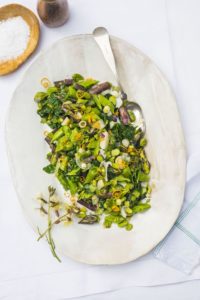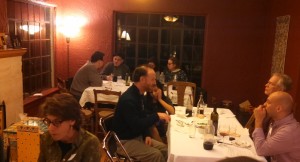By: Rabbi Ora Nitkin-Kaner

Beginning the second night of Passover, Jews around the world will begin counting the omer. The omer is counted every day for 7 weeks, ending with the holiday of Shavuot.
The 49 day-period between Passover and Shavuot marks two kinds of movement through time: the period of time between the first barley offering and the first wheat offering during the Temple era, and the transition from slavery to spiritual liberation.
During the Passover seder we recall the moment when our ancestors took their freedom. Although the Exodus happened in a matter of hours (hence the under-cooked matzah), Jewish tradition teaches that it took considerably longer for the Israelites to truly feel free; only once they received the Torah on Shavuot were the Israelites able to conceive of their role in redemption.
In Michigan, we’re far away from the wheat and barley harvests of Israel, as well as far from the experience of being enslaved. But as spring unfolds for us, counting the omer can help us shake off the stiffness of winter and recommit to the work of tikkun hanefesh (healing the soul) and tikkun olam (healing the world).
Some resources for counting the omer this year:
A brief meditation and exercise for each day from Rabbi Simon Jacobson
Daily themes from a variety of writers on RitualWell
More apps, books, and websites to help you count the omer









 American Jewish World Service has a full Haggadah, an insert about the Rohingya Crisis, “An Exodus in Our Time,” and several different readings all downloadable
American Jewish World Service has a full Haggadah, an insert about the Rohingya Crisis, “An Exodus in Our Time,” and several different readings all downloadable 





 What: AARC 3rd Night Seder
What: AARC 3rd Night Seder
 The days are just beginning to lengthen, and though the cold is just settling in, the extra light signals the tree sap that spring will come. And so begins the Jewish cycle of springtime, full moon holidays: Tu b’Shevat, Purim, and Passover.
The days are just beginning to lengthen, and though the cold is just settling in, the extra light signals the tree sap that spring will come. And so begins the Jewish cycle of springtime, full moon holidays: Tu b’Shevat, Purim, and Passover.

